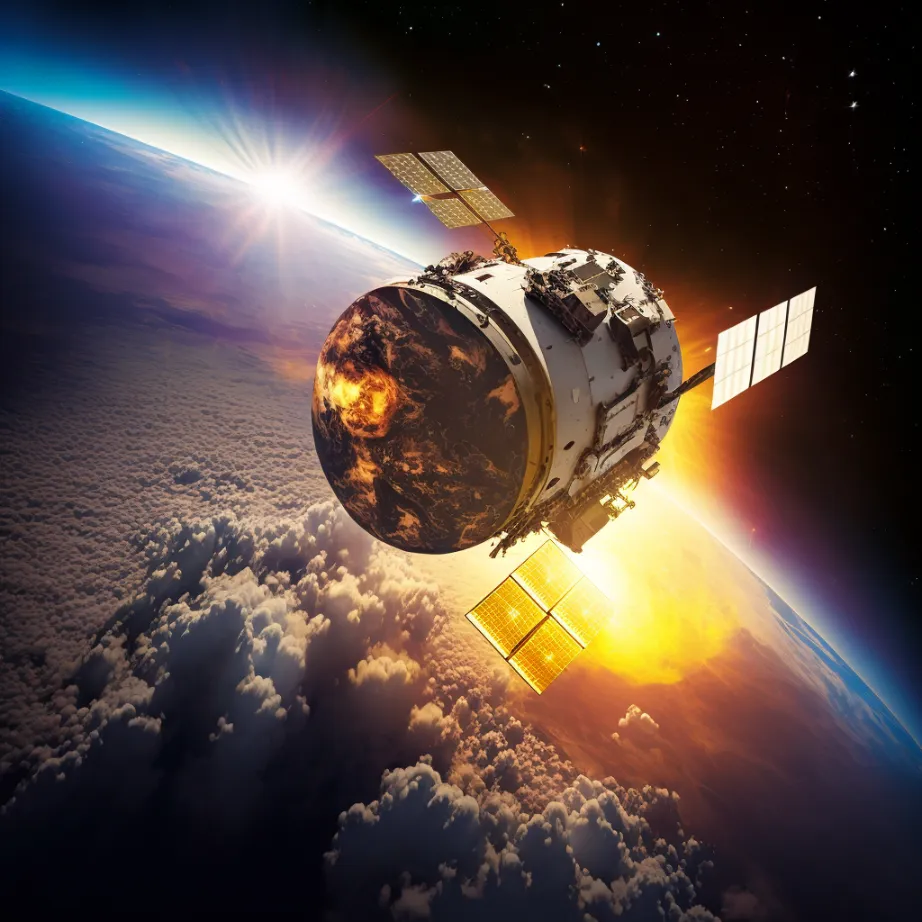Russian space weakness may encourage satellite attacks

In late May, Russia was reported to have launched an anti-satellite weapon (ASAT). The report exacerbates concerns about global stability and the peaceful use of space. The United States and its NATO allies rely on satellite reconnaissance, but Russian satellite capabilities have steadily declined since their peak during the Cold War. Satellite reconnaissance is critical for nuclear arms treaty verification and essential in mitigating fears about adversary capabilities.
Developed during the Cold War due to concerns about nuclear conflict, space-based intelligence has played a crucial role in preventing such a catastrophe. It has mitigated the fear of a surprise nuclear attack, reduced the incentives for a first strike, and enabled the verification of nuclear arms control treaties. Although the Soviet Union was the first to launch an Earth-orbiting satellite, the United States caught up within three years and has maintained a lead in satellite development and the integration of satellite-provided intelligence.
Russia falls behind
Since the end of the Cold War, the gap in satellite reconnaissance between Russia and the US and its allies has been rapidly widening. Russian reconnaissance satellites have short lifespans and high failure rates. The US military and civilian sectors have grown increasingly reliant on satellite imagery, leading private enterprises to enter the market. The situation in Russia is quite different: the disintegration of the Soviet Union forced the Russian Federation to curtail its spending on science, education, healthcare, and its space and satellite programs. Compared to before the dissolution, the 1990s saw Russian state financing for its military-industrial complex fall by 90%, science and technology funding drop four-fold, and R&D investment in space 60-fold. Furthermore, the economic reforms of the 1990s generated a surge in crime and corruption.
The lack of funding for Russia’s declining space infrastructure forced the Main Directorate of the General Staff of the Armed Forces (GRU) Space Intelligence Center, responsible for satellite reconnaissance, to sell its satellite imagery to states without space intelligence capabilities. To cover the funding shortfall, Moscow rented its launch vehicles and participated in international projects with the European Space Agency and American companies. For a brief period in 1996, Russia had no reconnaissance satellites, losing its ability to verify arms control treaties until it launched a new series using Cold War-era technologies. The new satellite series, Persona, encountered multiple technical issues and, until 2008, had to rely on occasional launches of ‘film-return’ satellites — old technology equipment that returns films with images to earth (this has happened electronically since the 1970s).
The economic recovery of the early 2000s and growth during the 2010s did not alleviate the pervasive corruption, insecurity of private property, and lawlessness in Russia. These structural problems affected both government-funded projects and the willingness of private enterprises to enter the market. Despite extensive military spending, Russia still depends on imports, particularly in the space sector. Neither foreign investments nor continued collaboration on space projects, including the International Space Station (ISS), have improved the reliability, lifespan, and timely delivery of Russian satellites. Neither has access to imports of essential high-tech components.
Moscow reorganised its space agency, Roskosmos, and allocated significant funding to expand its fleet to 70 satellites by 2015. However, structural problems within its space industry mirrored broader issues in its science, industry, and society. Increased government funding for space technologies has led to widespread corruption. Investigations revealed over US$1 billion in misappropriated funds in 2018 alone. US$172 million was stolen at a single spaceport, resulting in more than 160 indictments. Amidst these issues, Russia’s reconnaissance satellite fleet faced delays, accidents, lawsuits, and launch failures, all while the country adopted an increasingly belligerent stance toward the West.
This turmoil underscores the broader challenges in Russia’s space programme and its impact on international space security. The annexation of Crimea in 2014 and Russia’s military conflict in Eastern Ukraine severely strained relations with the West, leading to economic sanctions on individuals, energy companies, and banks. They also complicated importing critical electronic components for new reconnaissance satellites. Since the start of the war in Ukraine in 2022, the situation has worsened. The United States, EU, and other states have imposed multiple rounds of sanctions on various sectors and have tried to deny the Russian economy and military access to critical technologies. Meanwhile, mass migration from Russia has accelerated, worsening the brain drain.
Struggling to produce and launch satellites, Russia reportedly used an Iranian reconnaissance satellite to observe Ukraine. The outlook for its space industry is bleak. These gaps in space reconnaissance are already affecting military operations. For example, the lack of satellite intelligence prevented Russia from detecting significant Ukrainian railway transfers and troop and weapon movements by road. However, as Russia continues its military efforts, it will look to offset the West’s satellite advantage.
Russian counter-strategy?
The United States and NATO rely on satellite reconnaissance for their military strategy, while Moscow does not, incentivising Russia to neutralise Western space assets. As the capabilities gap widens, Moscow’s interest in ASAT weapons increases.
Russian ASAT efforts follow the Cold War-era Soviet ASAT programme, which the Soviet Union used to secure concessions during the Strategic Arms Limitation Talks (SALT II) negotiations with Washington in the 1970s. Since then, Moscow has been testing various ASAT methods, including electromagnetic pulse (EMP) weapons, air-launched vehicles, ground-launched missiles, ground ballistic missile defence systems, surface-to-air and missile defence systems for low-earth orbit, and inspection satellites launched since 2013. Among the non-kinetic ASAT systems available to Russia that can disrupt satellites during peacetime are laser technology to blind satellites, radio-electronic warfare systems to jam communication and navigation signals, and cyberattacks.
Russia has employed jamming multiple times in various regions. The most recent example, in April, forced Finnish airlines to cancel their flights to Tallinn, Estonia’s capital. Moscow has also used its considerable cyber capabilities to conduct successful cyberattacks on satellites. At the beginning of its invasion of Ukraine, it conducted a cyberattack on commercial satellite provider Viasat, damaging the ground-based satellite provider’s interfaces.
Russia has conducted multiple ASAT tests, striking Russian satellites in orbit and endangering other space assets, including the International Space Station, forcing astronauts at the ISS to seek shelter. Washington views those tests as attempts to deny space access and undermine strategic stability.
Without arms control negotiations, Russia is likely to move further towards developing anti-satellite weapons, as the recent launch of what appears to be an inspector satellite confirms.
Since the 1970s, nuclear arms control treaties have effectively reduced the types and numbers of nuclear missiles threatening the world. However, the only nuclear arms control treaty between the United States and the Russian Federation currently in force, the New START treaty, has exhausted all extension options and will expire in 2026. Russia suspended its participation in the treaty in Feb 2023. Since the beginning of its invasion of Ukraine, Russia has been ‘rattling its nuclear saber’ to compel Ukraine to capitulate and block the weapons transfers from the West. The threat of nuclear confrontation is at its highest level since the Cold War.
Even if arms control negotiations were to occur, Russia’s limited reconnaissance satellites and difficulties in producing and launching additional ones would complicate verification mechanisms. Besides, Russia refuses to allow US inspections on its nuclear sites under the pretext that Russian inspectors cannot visit American sites due to US-enforced sanctions that prohibit travelling to the United States. Moscow is likely concerned that US on-site inspectors would help Ukrainian targeting.
The prospects for meaningful disarmament are bleak, threatening global stability and the peaceful use of space.




